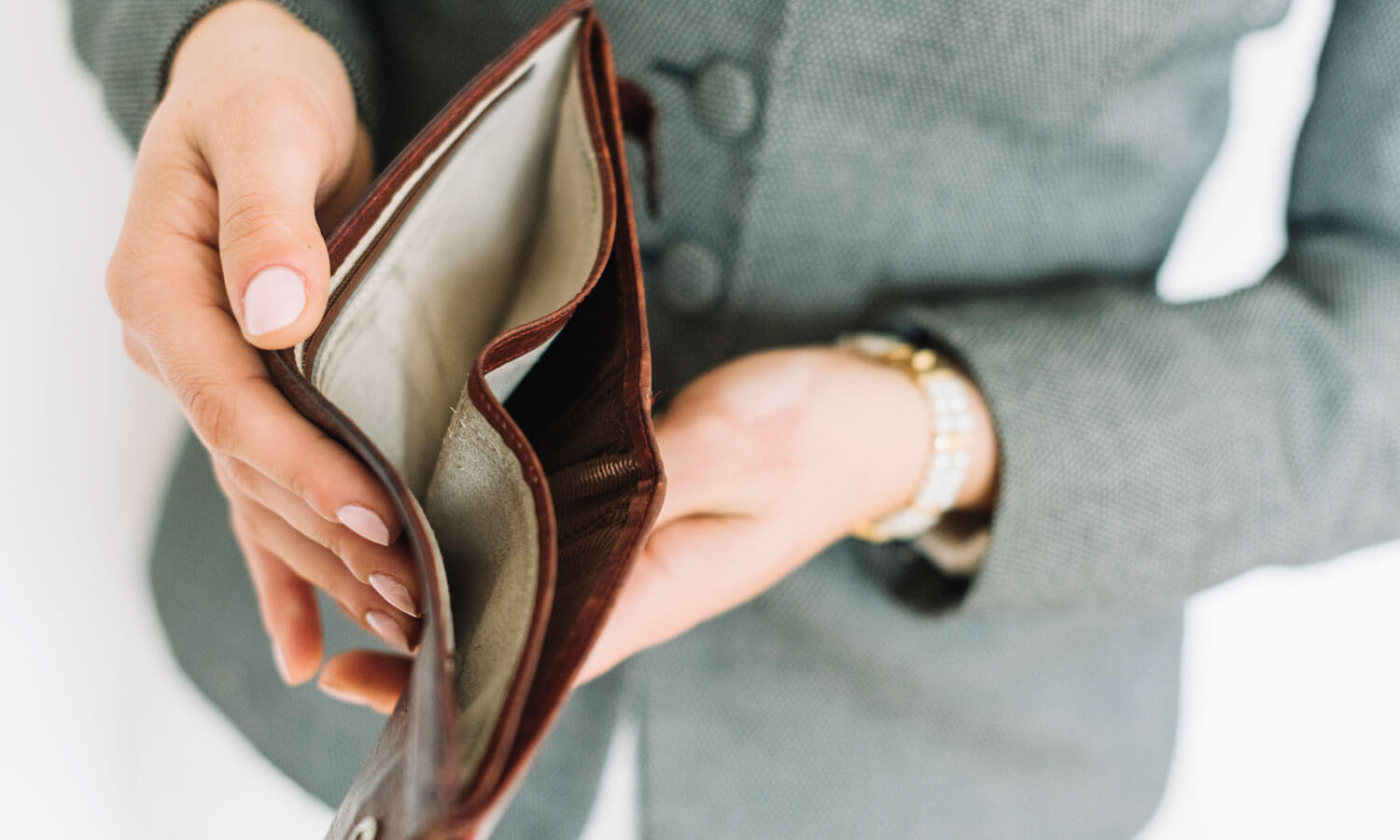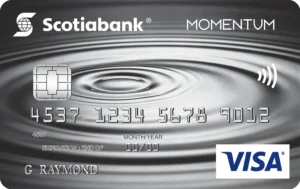- Annual fee: $0
- Interest rate: 20.99% on purchases, 22.99% on cash advances and 22.99% on balance transfers
- Minimum deposit: None
- Income requirements: None
- Additional benefits: None
Pros
- Earn 3 miles for every $25 spent at participating partners, 2 miles for every $25 spent at any eligible grocery store, and 1 mile for every $25 spent on everything else.
- You can “double dip” using this card and your Air Miles card at sponsored locations to increase your Air Miles earned.
Cons
- This card doesn’t come with any extras.
Best credit card for newcomers to Canada
Scotia Momentum No-Fee Visa*
At a glance: Newcomers often have no Canadian credit record which can hinder a person’s ability to apply for a loan or mortgage, or initiate a relationship with their bank. The Scotia Momentum No-Fee Visa remedies that with a no-fee card that earns cash back rewards and comes with a beefy welcome bonus to boot.
- Annual fee: $0
- Interest rate: 19.99% on purchases, 22.99% on cash advances, and 22.99% on balance transfers
- Minimum deposit: None
- Income requirements: $12,000
- Welcome offer: Earn 5% cash back on all purchases for the first 3 months (up to $2,000). Also, get a 0% introductory interest rate on balance transfers for the first 6 months. After that, the rate returns to 22.99%. Must apply by Oct. 31, 2022.
- Additional benefits: Up to 25% off base rates at participating Avis and Budget car rental locations
Pros
- Transfer balances from other cards and pay no interest for six months.
- Earn 1% cash back on purchases at gas stations, grocery stores, drug stores and recurring payments, and 0.5% cash back on everything else.
- Supplementary cards are free, so you can have family members or trusted friends on your account.
Cons
- This card doesn’t offer any included insurance protections.
- After six months of benefitting from 0% interest on balance transfers, the interest reverts to 22.99%.
How to get approved for a credit card with bad credit
Having a credit card and using it responsibly is a powerful way to repair your credit history and credit score. But you’ll have to be strategic with the card you choose to apply for. Expect to qualify for cards with fewer perks than the popular credit cards available, as well as less favourable terms or even cards that require a deposit. Once you begin establishing your creditworthiness, you can upgrade to a card with better rewards and terms.
There are several ways to go about getting a credit card if you have bad credit.
- Secured cards mitigate the risk for those with bad credit by attaching collateral, usually in the form of a monetary deposit that can be used to cover unpaid debt. There are many options (including the best credit cards for bad debt), so you should be able to easily locate one that works for you.
- Unsecured cards do not require collateral so they can have a slightly higher threshold for qualification. Those with a fair rating may be able to get one. Aside from not requiring a deposit, these cards sometimes come with some perks like points or cash back.
- Pre-paid cards are what they sound like: Credit cards that you load with money prior to spending, rather than paying off your debt on a monthly basis. These cards are really useful for those who have trouble sticking to a budget, and because they have to be pre-loaded, you can’t overspend.
- No-frills cards are essentially stripped-down cards specifically tailored for those with bad credit. Many big banks offer these as part of their credit card range. These may not offer any perks and benefits but they can help you improve your financial picture.
- Smaller financial institutions frequently have special offers or unique products to try and attract new customers. If a big five bank won’t lend you money, try a lesser-known but trusted (and insured!) lender.
- Fintech, short for “financial technology,” is a broad term for any type of technology that’s used in place of traditional financial services—and it’s actually a burgeoning industry in Canada. Fintechs offer a wide variety of products and services, including secured credit cards, loans, credit building tools and budgeting tools. And many are specifically designed for people with bad credit history and scores.
Search for credit cards and personal loans. Once you’ve researched which cards you might qualify for… wait. Every application you send in will affect your credit score, so you want to be thoughtful about when and how you apply. Compare your options, paying close attention to fees, interest rates, repayment terms and available perks. When you’ve made your prioritized list, it’s time to submit your first application. And be completely honest with your application. Wait for the response before moving down your list. Most creditors have a very quick turnaround so it’s not worth making multiple submissions to only jeopardize your credit score.
What is a bad credit score in Canada?
Your credit score is expressed as a number, generally between 300 and 900, that represents how credit-worthy you are. Meaning: how much of a risk you could pose to lenders or creditors to not pay them money back. Your score is affected by all sorts of variables including the amount of debt you carry, whether you repay in full and on time, and even how long your credit history is. The higher your credit score, the better.
| Category | Range |
|---|---|
| Poor | 300 to 659 |
| Good | 660 to 724 |
| Very good | 725 to 759 |
| Excellent | 760 to 900 |
Credit scoring models do differ, so each institution can have its own metrics for what scores of “good” and “bad” are. But generally, a credit score of 760 and over is considered “excellent.” Scores between 660 and 759 are “good” or “very good.” And most lenders will accept the risk associated with these borrowers. If your credit score is below 660, you may have trouble finding a creditor—or if you do, the terms may not be optimal.
Just as your financial habits created your credit score, so they can improve it. Here are the five variables that most affect your credit score, with the most impactful first.
- Payment history refers to whether you pay your bills in full and on time, as well as if you’ve missed any payments and how long you were in arrears (had money owing).
- Debt load is the total amount of money you owe creditors, including credit cards, personal loans and mortgages.
- Types of credit you carry (such as credit cards, mortgages, personal or business loans, and retail accounts) affect your credit score. The more creditors you’re beholden to, the more of a risk you might pose to the financial institution.
- Loan applications affect your credit score too. Each time you apply for credit, your score takes a small but temporary hit. This is because it signals to lending institutions that you need credit. This is completely normal and to be expected, but worth understanding so you don’t apply for multiple sources of credit, over a short period of time.
- Credit history counts too. You might think that if you’ve never applied for credit, your score would be perfect. But that’s wrong! Having a credit history is important as it shows lenders that you’re capable of repaying your debt. This is why you should apply for a credit card early, and use it responsibly.
Establishing your credit score as a newcomer to Canada
Unfortunately, if you’re a newcomer to Canada, your credit score from your home country won’t follow you here. As a result, your credit card choices may be more limited, but this also means you can start building a new score from scratch—which, for some, can be a positive. One approach is to use a secured card to help you get started, with the goal of graduating to a better, unsecured card.



